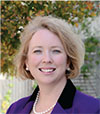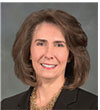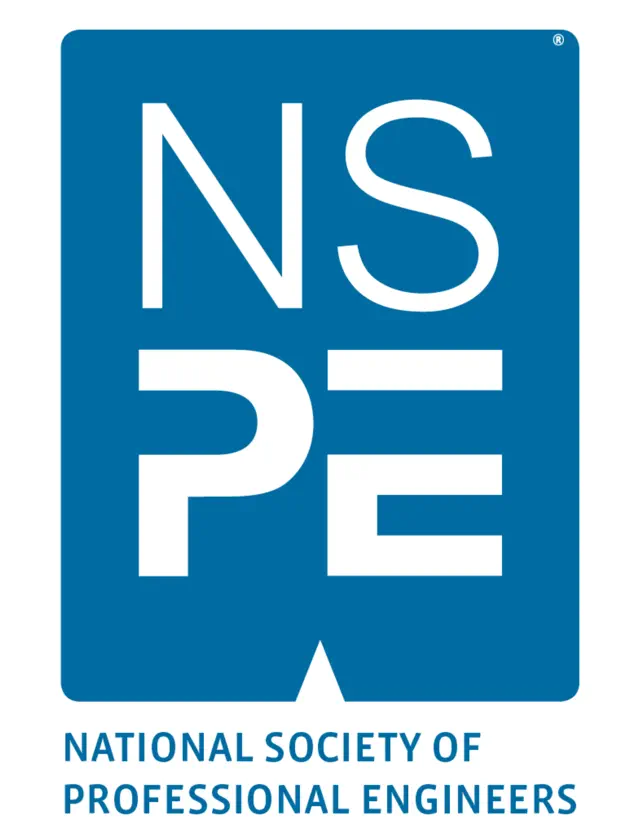March/April 2020
In Focus: Leadership
Confronting Imposters and Other Career Challenges
BY PATRICK INGRAHAM AND DAVID SIEGEL
When NSPE member JoAnn Browning, P.E., took the job as the dean of the college of engineering at the University of Texas at San Antonio in 2014, she told the Chronicle of Higher Education that she wanted to convince more girls that they could become great engineers.
Six years later, she continues to see gradual progress, but the road can be steep and bumpy. Although attitudes are changing, women in engineering, particularly those who aspire to leadership roles, face obstacles that the profession has been slow to recognize.
On the bright side, young engineers—both women and men—who want to thrive and take on leadership roles can learn from NSPE members, like Browning, who have lived the experience.
Quashing Self-Doubt
Browning believes part of the reason trends are gradually changing has to do with women in engineering overcoming the “imposter syndrome.”
 JOANN BROWNING, P.E.
JOANN BROWNING, P.E.The imposter syndrome is self-doubt created by feelings of inadequacy of not belonging, which engineering educators Mary Williams and Carolyn Emerson believe is a very real issue women engineers face in their careers. In their 2019 book, Becoming Leaders: A Practical Handbook for Women in Engineering, Williams and Emerson describe how leaders of every kind can have those same feelings, regardless of sex.
“Many women agree wholeheartedly that women should be leaders but doubt their own ability to lead. It is important for these self-doubters to realize that even the most overtly confident leaders feel this way sometimes,” they write. “A syndrome with a name is handy because it reminds us that we are not alone in having these feelings and that we share them with other successful leaders.”
Browning adds: “I do believe that the imposter syndrome is a key element [in limited female participation in engineering], and because of that, we need to continuously tell our female students that they belong in this field and that we need their unique perspectives to create the very best engineering designs.”
Today’s attitudes are clearly much different than those in the college days of Karen Pedersen, P.E., F.NSPE, when female engineering students were simply ignored. Pedersen graduated with an electrical engineering degree from Iowa State University in 1975, spent over 30 years in the energy sector, and served as 2017 president of IEEE-USA (See article). “They didn’t know what to do with [female engineers] at that time,” she says.
Since Pedersen’s time at Iowa State, there have been many signs of change. On February 20, Engineers Week held another successful Introduce a Girl to Engineering Day. It was the event’s 20th year.
Numbers also signal a change in trends. According to the American Society for Engineering Education, in 2017 women earned 21% of bachelor’s degrees, 26% of master’s degrees, and 24% of doctoral degrees in engineering—all significant increases from 2009 (17.8 % of bachelor’s degrees, 23% of master’s degrees, and 21.3% of doctoral degrees).
Additionally, women engineers in leadership positions in academia have seen progress. In 2002, just 13 engineering programs in the US and Canada were led by women. By 2008, that number had increased to 34. Currently, there are 74 women deans among the 305 engineering programs in the US and Canada tracked by ASEE, including 18 women appointed to dean positions in 2018.
Finding Success
NSPE member Paula Marino, P.E., is the executive vice president of technical and project solutions for Southern Company, where she has worked since 1993. She acknowledges the need to continue increasing the female perspective in engineering. But she adds that individual work ethic and continually proving to yourself and others that you are capable goes a long way toward ensuring others see you as a legitimate leader.
 PAULA MARINO, P.E.
PAULA MARINO, P.E.“For young engineers, don’t be afraid to get your hands dirty,” she says. “Make yourself distinguishable in order to give yourself credibility. Ask questions and volunteer to lead or take part in the projects nobody wants to do or those that are challenging. Don’t be afraid to take on the dirty jobs.”
As an engineering manager, Marino believes that focusing on serving others first is a great way to let them grow while still leading by example.
“For young engineering professionals, focus on the people who work with you and work for you. Make sure that you have the right work for the right people,” Marino says. “It is our job as leaders to challenge our engineers to find solutions, but to balance that by standing out of the way and making sure they find solutions on their own. Practicing servant leadership—helping others do the best job they can possibly do—and showing a humble confidence, that is, showing your capabilities without going out of your way to do so, in everything you do is key to becoming a great leader, regardless if you are a man or a woman.”
Connections also matter. Browning emphasizes that personal relationships count and building trust with others in engineering has made her a successful leader at every stage of her career.
“When you enjoy your job, it is easier to exceed in your personal and professional goals, and that makes everyone around you more successful, as well,” Browning says. “I encourage young women engineers to make connections broadly in the engineering community and become involved in a professional society where you make a difference. This means volunteering to lead initiatives within the society and following through to completion. This is how you can build trust and respect within your engineering circles and make relationships that will last a lifetime.”
Keeping Your Balance
Careers in engineering are likely to place serious demands on a person’s time and constraints on her schedule. While both women and men experience the tension between commitment to their careers and to their private lives, women often find themselves in what Becoming Leaders describes as the “sandwich generation.” Not only do they have significant responsibilities for their children, but also for aging parents and other family members.
While many admit that achieving a perfect balance between work and personal life is nearly impossible, prioritizing certain aspects of their careers and family life over others at specific times is integral to not only becoming a professional engineer, but also a great leader. Additionally, it is important for engineering companies and their leaders to understand the demands and responsibilities many women in engineering are tasked with outside of work.
 KIM GROVES, P.E.
KIM GROVES, P.E.“Personally, I don’t believe a balance exists,” says Kim Groves, P.E., CEO and president of KCW Engineering Technologies in Glen Burnie, Maryland. “In life, nothing is ever truly balanced. To do something well, it requires both short- and long-term moments of priority and focus. It also requires the agility to hone in to the task at hand and redirect to focus on another task when the priority shifts. If we focus on maintaining a 50-50 balance, we are unable to give proper attention to either obligation. It is important to seek a company who understands the demands of both work and family and supports you in meeting those needs.”
Marino echoes the sentiment while also encouraging women engineers, especially young mothers, to seek help from coworkers and others in their local communities.
“Having three daughters makes ‘balance’ a little tough to achieve,” Marino says. “It’s not about balance, it’s about integration. What work can you do at your kids’ school events? Can you answer emails while running errands? The important thing is to first, stay organized because you cannot do everything on the fly. Second, get help in all aspects. The phrase, ‘it takes a village’ is so true, and luckily, I have had a small city. Third, get over it. Get over yourself and your self-doubt because at the end of the day your career and personal life and how you handle them are your responsibility.”
Continually receiving support from partners and family members has contributed a lot to Browning’s success as an engineering leader.
“Undoubtedly, I would not be in my current position without the full support of my husband and my colleagues,” Browning says. “I felt accepted for my family choices, and supported with adjusted workload, so that I was able to continue on time for each promotion, maintain my research, and have meaningful teaching experiences.”
Browning stressed that her husband is a full partner in all their family responsibilities, from school visits to meals and housework—and went on to mention that other female engineers should seek out the help of others like professional nannies and their friends.
“I had to let go of trying to be the perfect mom, wife, and engineer, and focus on the elements that I could make the biggest differences,” Browning says. “I think my kids appreciate having a mom that works hard to make a difference in many engineering careers.”
In one of the focal passages of Becoming Leaders, Williams and Emerson stress the broad ways in which women engineers can grow into leaders:
“Review your own vision, values, and courage. Take responsibility for the decisions that direct your career and life toward your vision. Work for success in your studies and career, but balance work with the other parts of your life. Your character as a leader builds on your position in life. Once you have your team of one moving in the right direction, your confidence will grow. As you encourage others and share your experience, your teams will grow.”


 Volunteering at NSPE is a great opportunity to grow your professional network and connect with other leaders in the field.
Volunteering at NSPE is a great opportunity to grow your professional network and connect with other leaders in the field. The National Society of Professional Engineers (NSPE) encourages you to explore the resources to cast your vote on election day:
The National Society of Professional Engineers (NSPE) encourages you to explore the resources to cast your vote on election day:
